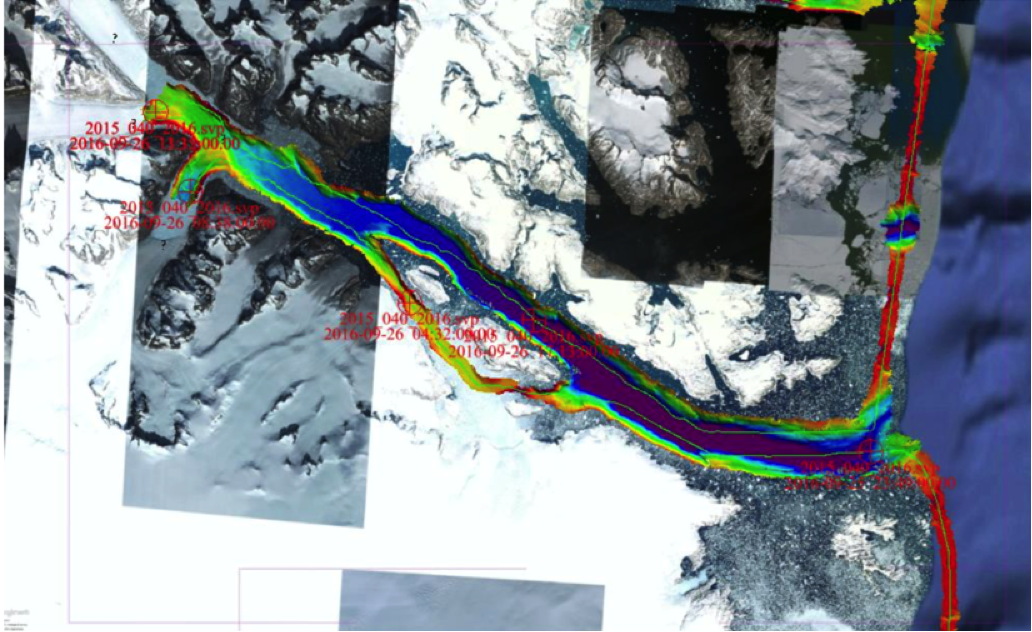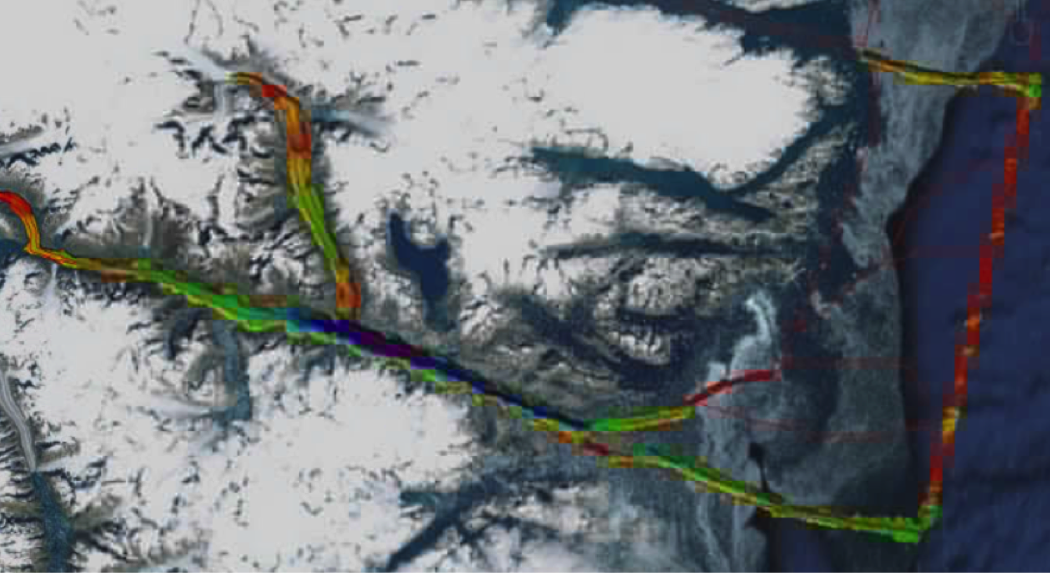For five weeks, clouds and high winds have prevented the CORAL project from venturing into the Torres Strait and northeast Great Barrier Reef (GBR) regions. However, on Wednesday, October 12, the clouds cleared to a remarkable degree, allowing the CORAL flight team to image one of three regions in and around the Torres Strait. The skies continued to be reasonably clear over the following days, allowing the flight team to image the remaining two northeast GBR regions.
You are here
News
Airborne eXpendable Conductvity, Temperature and Depth (AXCTD) Science Element: Last week, OMG’s AXCTD mission continued flight operations from Keflavík, Iceland.
The ASO successfully completed the SnowEx baseline flights in Colorado.
The next generation Airborne Visible Infrared Imaging Spectrometer (AVIRIS-Ng) deployed last week to KSC for flights over the Spacex Falcon 9 debris location. Upon completion of the flights in Florida, the aircraft returned to Burbank to resume the California Methane Survey.
Airborne eXpendable Conductivity Temperature and Depth (AXCTD) Science Element: Last week, OMG’s AXCTD mission continued flight operations from Thule, Greenland. OMG dropped over 40 AXCTDS south of Thule. On September 19, OMG departed Thule and flew to Keflavík, Iceland. On the way, OMG dropped 8 AXCTDs.
Last week, OMG AXCTD flew 18 hours, and dropped over 50 AXCTD probes in OMG’s North West and South East Science areas.
Bathymetry element: Terasond (OMG Bathymetry contractor) surveyed over 600 nautical miles of Greenland’s South Eastern science area last week.

Since September 27, the P-3 returned to Wallops and the ER-2 flew from Namibia to Brazil on September 29 and from Brazil to Warner Robins (Georgia) on October 3. It will continue its transit back to Armstrong on October 7. The P-3 and the ER-2 were acquiring science data on the transit legs. AirMSPI acquired images across the entire Atlantic, including the overflight of two Aeronet stations on Ascension Island.
Last week the next generation Airborne Visible and Infrared Imaging Spectrometer (AVIRIS-ng) was continuing flights for the California Methane Campaign on the Dynamic Aviation King Air aircraft. Over the weekend there was a vicarious calibration experiment over the Ivanpah Playa at the CA and NV border as part of the ongoing AVIRIS calibration and validation efforts. A team from JPL was deployed to make in-situ surface spectral measurements along with atmospheric column measurements. On Monday the sensor and aircraft was tasked to fly from CA to FL to participate in the survey for Falcon 9 debris at KSC. The SpaceX team at KSC has setup a large FTP data pipe to transfer the AVIRIS-ng data from KSC to JPL. The aircraft is scheduled to return to CA over the weekend to resume the CA Methane Campaign.
The AIRMOSS Project has officially ended at the end of FY’16. The project has met or exceeded all level 1 requirements and completed the task on schedule and budget.
Science Team: On September 20, the benthic cover team visited five (5) sites, two (2) in the middle of the lagoon, one (1) off a mooring on the south side, and two (2) on the reef flat. The benthic cover team also conducted in-water spectroscopy at the mooring site. The optics team conducted a third IOP/AOP sensitivity study during a tidal cycle on the northern end of Heron Island. The metabolism team set-up instrumentation for gradient flux measurements at two reef slope sites on the south side.
On September 22, the benthic cover team completed six (6) sites; they finished up the south side moorings with three (3) on the reef slope and one (1) just on the edge of the flat, then went into the lagoon and did two (2) macro-algae sites. The benthic cover team also conducted spectroscopy measurements at one of the moorings. The optics team completed five (5) sites; they went to the lagoon to visit targeted sites that included shallow live coral, deeper turf algae, and algae–covered coral. The metabolism team obtained water samples at the Lagrangian transect, retrieved gradient flux A from the north fore reef, retrieved gradient flux B and redeployed on the north fore reef, and retrieved all Lagrangian instruments. Today concludes the in-water validation at Heron Island.
Aircraft Team: On Friday, September 23, the weather held out and the sixth (GBR06) science collection flight over the southeast Coral Sea was made, followed by completing the missing lines over Mackay region (clouds had rolled in toward the end of the first science flight). Weather at Townsville simply did not pan out. The team collected nineteen (19) flight lines, under mostly clear conditions. This flight completes the coast-to-offshore transect.
On Saturday, September 24, during the six (6) hour flight, a total of seventeen (17) science data lines were collected.
Airborne eXpendable Conductivity, Temperature and Depth (AXCTD) Science Element: Last week, OMG’s AXCTD mission arrived Svalbard, Norway. OMG few 4 flights, dropped over 30 AXCTDS and completed the North Eastern science area. On September 23, OMG departed Svalbard, in route to Thule, Greenland. OMG dropped an additional 8 probes and landed in Thule, Greenland. On September 24, OMG flew and dropped over 26 AXCTDS. Last week, OMG AXCTD flew 28 hours, and dropped over 60 AXCTD probes in OMG’s North East and North West Science areas.
Bathymetry element: Terasond (OMG Bathymetry contractor) surveyed over 700 nautical miles of Greenland’s South Eastern science area last week.

